An Age-Group Perspective: Triumphs and Trials at Ironman Subic Bay 70.3
In the midst of storms and sweltering heat, David narrates his riveting journey through the Ironman Subic Bay 70.3, offering a firsthand account of his incredible resilience and triumph.

Subic Bay, situated about 162 km from Manila in the Philippines, is a locale steeped in history. Once a home to the U.S. naval forces in the Pacific and earlier on, the Spanish in the 1800s, it's renowned for its pristine water and stunning beaches. As a second-timer to a race in the Philippines, having previously participated in Ironman 70.3 Cebu, I was thrilled to journey from Australia to this extraordinary location.
Before delving into the race, it's beneficial for overseas visitors to understand the logistics. The local airport in Subic Bay is Clarke, suitable only for light aircraft. Therefore, the majority of visitors will fly into Manila. Expect a thrilling taxi ride from Manila to either Subic or Olongapo, where accommodations are located. Allocate at least four hours for this journey, as most taxi drivers tend to drive below the speed limit to conserve fuel. A fare of 6000php is reasonable!
The intensity of heat and humidity in the Philippines is undeniable, so I suggest arriving in the area at least a week prior to the race to acclimate and prepare for the heat. While the Olongapo and Subic areas boast several attractions, a week-long stay may exhaust the available entertainment options. I would, therefore, recommend spending a few initial days in Manila.
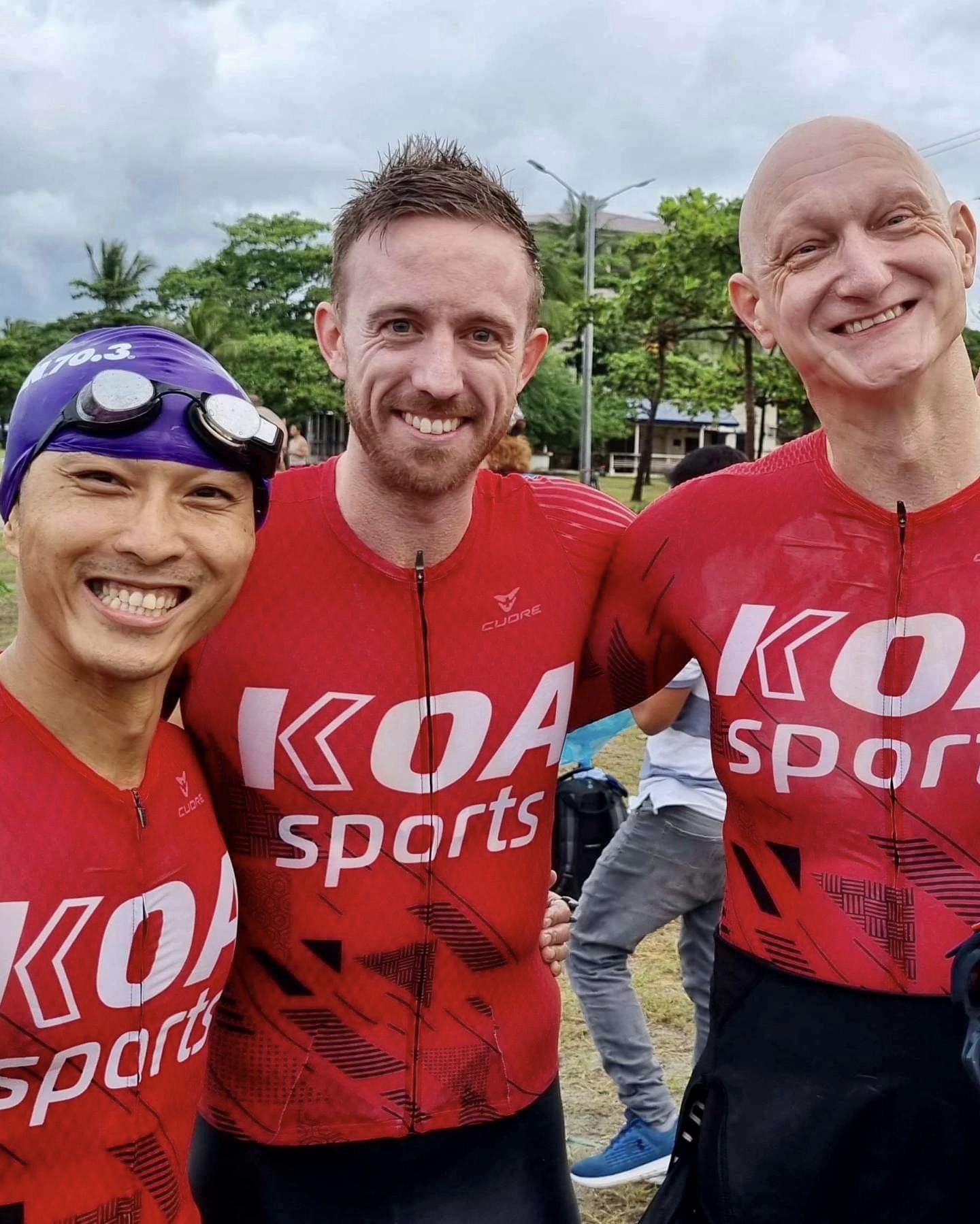
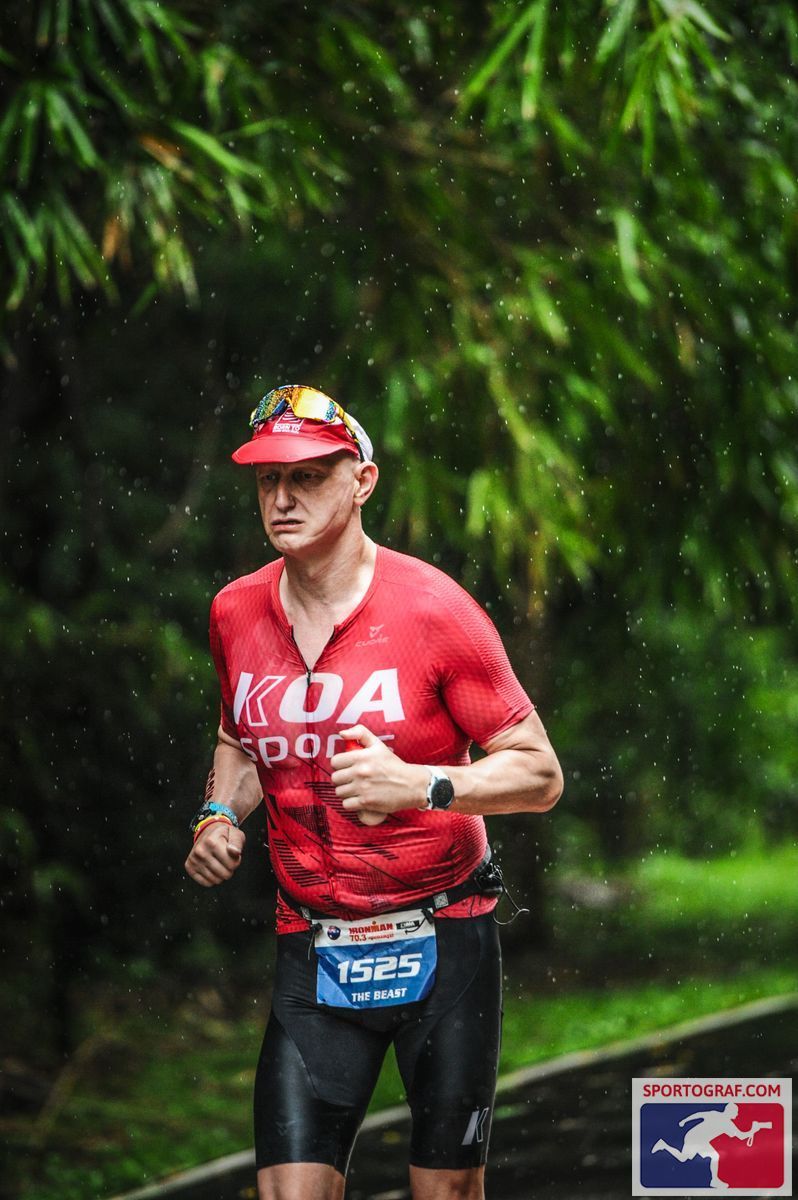
My Koa Sports team mates, suffering (and passing out) all the way to the end
Before the race, you'll find that Subic and Olongapo areas are well-equipped with supermarkets, shopping centres, and a variety of amenities. However, bear in mind that there are no bike shops capable of handling high-end bikes.
The race organization was impeccable, featuring a small expo, straightforward check-in, and hospitable staff.
Race day was indeed memorable. The rainy season's influence was felt early as the morning started with torrential rain and flooding around the start area. This evoked a sense of apprehension among athletes lining up for the rolling start. As the blower was activated, a tropical storm surged through, stirring up the waves and wind. Chaos reigned in the swim. Forceful winds pushed buoys and athletes off course, with many latching onto the buoys to stay afloat. The rectangular course morphed into a triangle as the farthest turning buoy drifted significantly. It was a highly challenging non-wetsuit swim. One of the lifeguards began turning people before the buoy, but I swam on, reached the turnaround, and headed back to shore, about 300 meters away from the swim exit. A typically 29-minute swim ballooned into 43, yet I was the first out of the water in my age group.
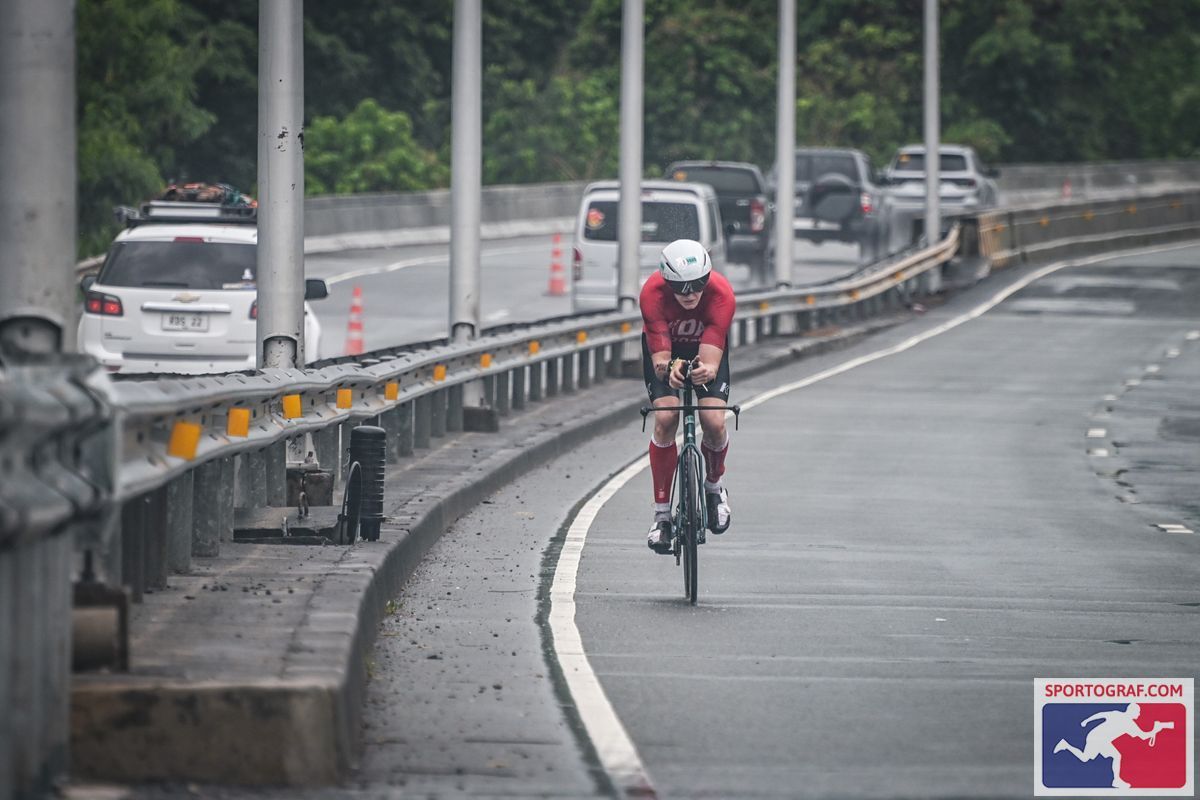

Lower those tire pressures!
The race's damp beginning resulted in a challenging transition, replete with water-logging and a tough exit. The two-lap bike course, primarily on the freeway, was arduous due to a large climb at the start and end, plus the continuing rain and wind. This made it hard to find a good rhythm, and maintaining control was tough, with some teammates even breaking their aerobars. Despite initially believing I was trailing the leaders, I found out I was still first in my age group on the bike. I ended up about 30 minutes slower than usual, with a leisurely pace of 2:47.
Relieved to survive the biking leg, I transitioned to the run. With tired legs from the biking stress and the hills, I decided to stick to my coach's plan and focus on completing the run. The rain and wind eased a bit, but the humidity lingered. The run course technically has two laps but includes three turnaround points per lap. With detours into multiple 'side streets', pre-studying the course map is worthwhile. Volunteers were supportive and helpful, ensuring no one got lost. On-course support was excellent, with cheering crowds, iced water, gels, electrolytes, and more at 1km intervals. Though the largely flat course allowed for some pace, the substantial 2km climbs at the 8km and 16km marks strained the legs. I started noticing the race leaders' class, particularly John Deadus Alcala, the overall male winner, who achieved an impressive 1:27 run time in the heat. Meanwhile, the overall female winner, Ines Santiago, managed 1:51. Starting to fade at 16km, I was content just to cross the finish line, clocking what I thought to be a very slow time of 5:32, an hour slower than my usual.
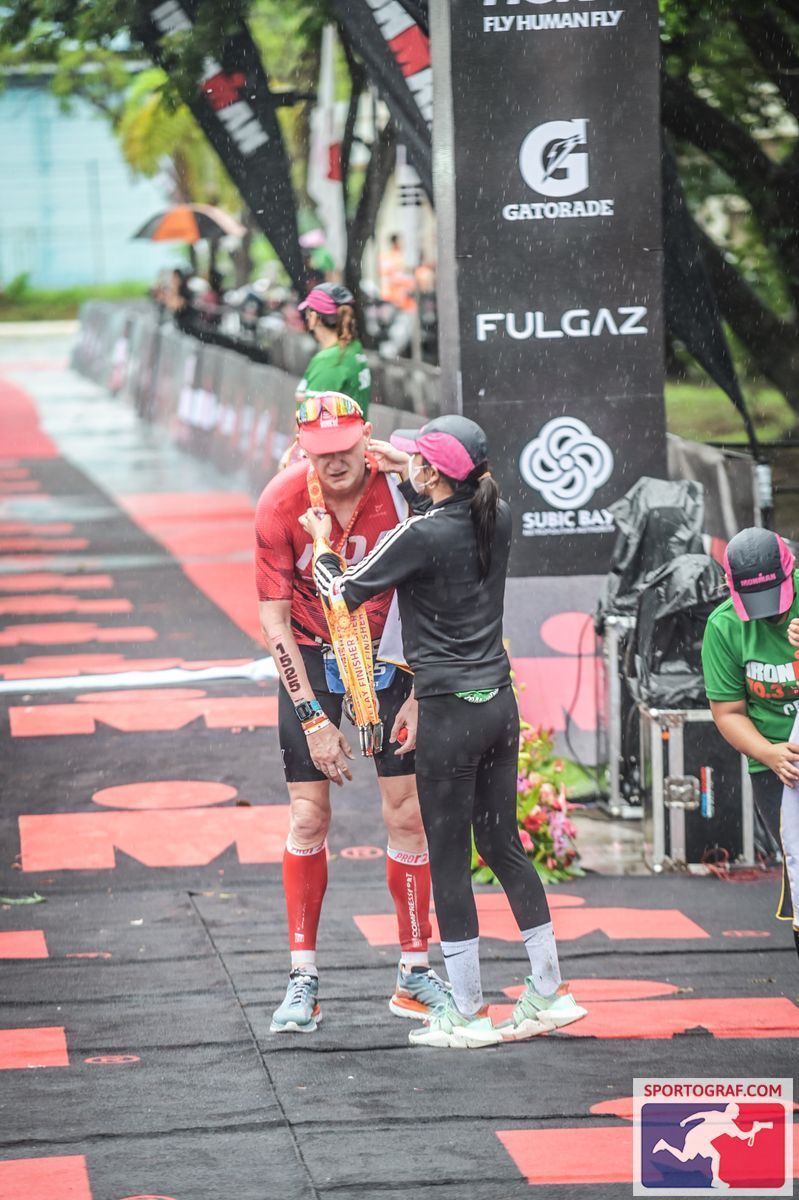
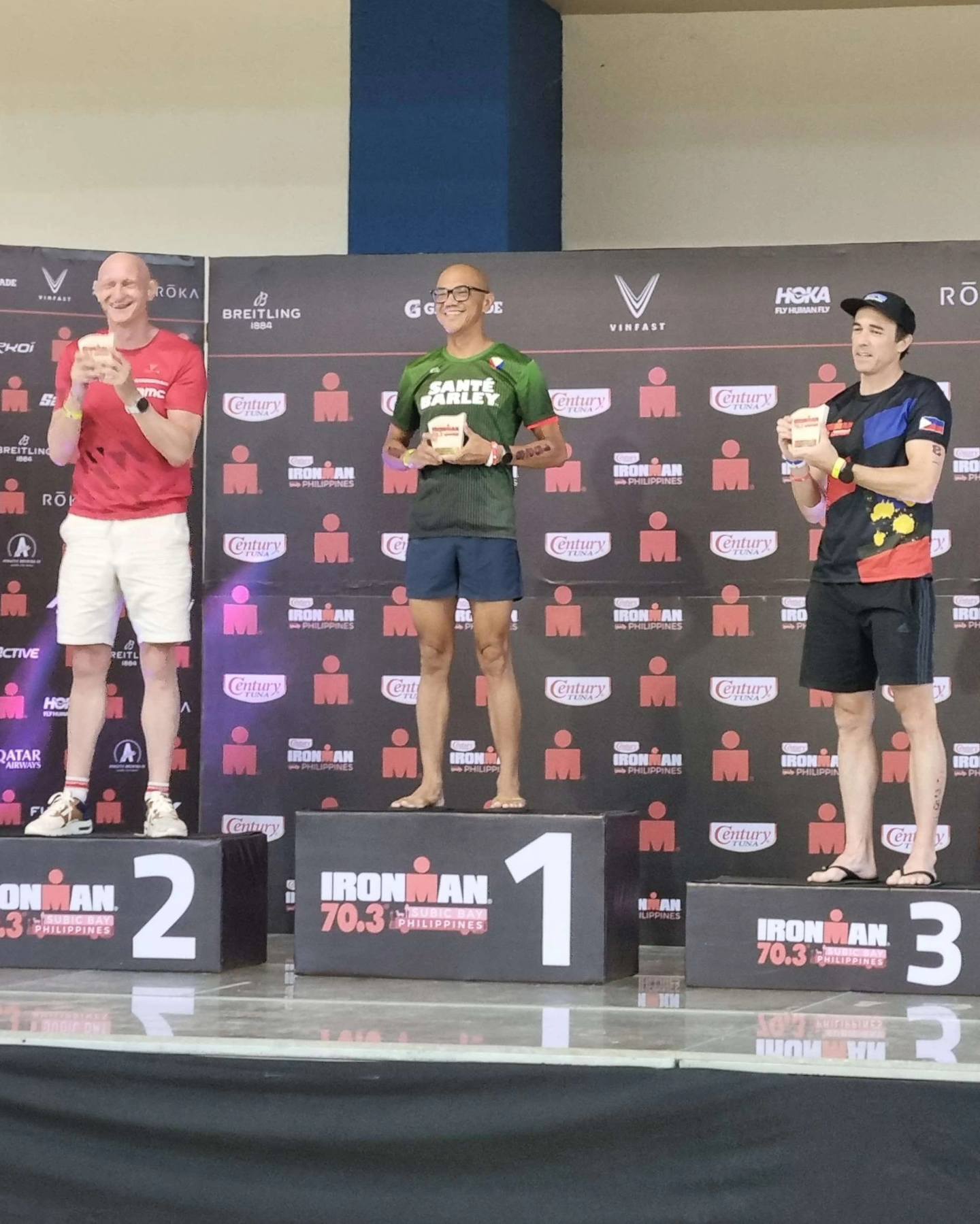
Glad they didn't capture me collapsed on the ground... The Podium makes it all worth it though!
In an unexpected turn of events, that performance was sufficient to secure me a second spot in my age group, even though I was overtaken on the run. But all said and done, it was a good day.
Would I recommend Subic Bay 70.3 to my fellow Trizoners? Unquestionably. It's a fantastic race venue and offers a unique experience. Respect the conditions, prepare for the heat and humidity. As my coach always reminds me, racing in Asia can either be awesome or a complete disaster, so be ready for an eventful day, much like what we brave souls experienced this year!





Comments ()